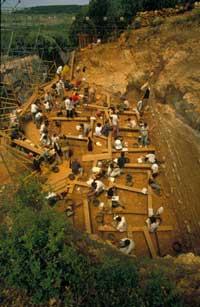Old news
Recently two scientists have released a test on whether the cattle have eaten or not meat feed. This test is based on the amount of nitrogen isotopes present in animal cells. In air nitrogen there are two isotopes: 14 and 15. Plants have 15 more nitrogen than there is in the air and animals more. Therefore, animals fed animal proteins have 15 more nitrogen than those that have only ingested vegetable protein. If necessary, the most remarkable thing is that this test can be done even with live animals.

Atapuerca's director of studies, Juan Luis Arsuaga, explained that this technique has long been used in archaeology and paleontology. Although radioactive isotopes are used to measure the age of fossils, to investigate trophic chains, that is, to find out who ate, they use stable isotopes. For example, to study the feeding of Australopithecans living in Africa, they were based on the proportion between stable carbon isotopes.
At the Sima de los Huesos at the Atapuerca site, James Bischoff of the U.S. Geology Service investigates the carbon and nitrogen isotopes of bears 300,000 years ago. These bears believe they are the ancestors of the giant sandy bears. However, according to studies, although the bears of the Valley ate very little meat, they have been able to know that those of the Sima de los Huesos were much more carnivorous.
According to Arsuaga, it is very important to see that research techniques that some consider useless can help solve current problems.
Buletina
Bidali zure helbide elektronikoa eta jaso asteroko buletina zure sarrera-ontzian











